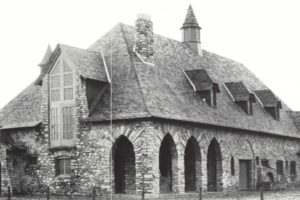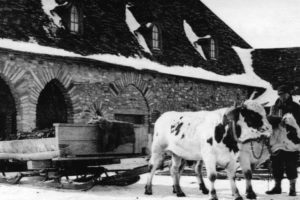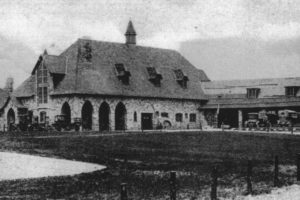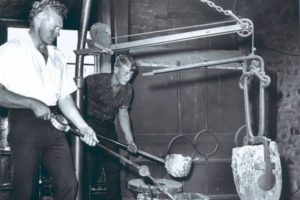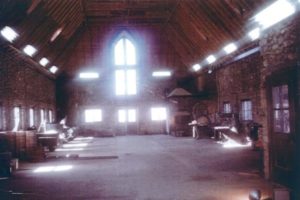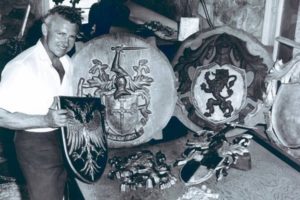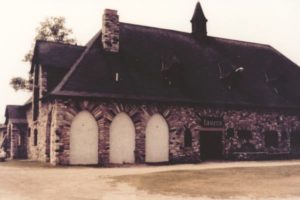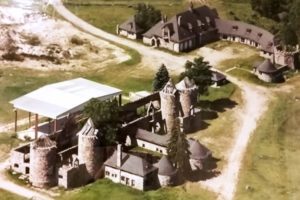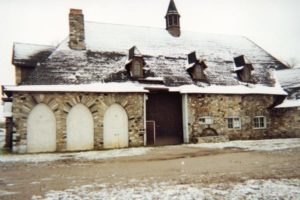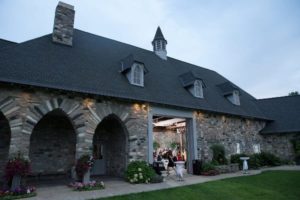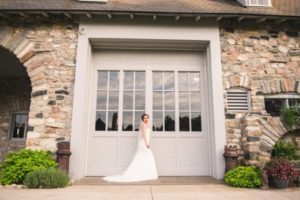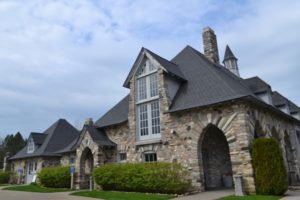From dairy cows to metalwork, rock and roll to tours and weddings, Castle Farms has hosted many different people, animals, and ideas. An extensive restoration project brought it back from ruin, but one stone building remains mostly the same as when it was built, almost 100 years ago.
The Knight’s Castle was originally a horse barn housing thirteen pair of draft horses and mules. An aisle ran down the center of the room with stalls to either side. The second floor was originally a hayloft, complete with a set of double French doors for loading hay. After the farm closed in 1927, the land sat vacant and was used for storage.
When John VanHaver purchased the property, he removed the hayloft, raising the room to a height of twenty-eight feet. This gave him the vertical space needed to accommodate the heat of a foundry. He placed his forge in the old barn and used the remaining area as work space. VanHaver created many works of art in the Knight’s Castle, including shields, emblems, and escutcheons cast in aluminum and bronze.
Early in the ownership of Art the barn again housed horses. The Reibels purchased the property in 1969 with the intention of opening a riding academy. New plans evolved however, which included a theater, tavern, and eventually concert venue. Once the rock concerts of the mid-70’s started, Reibel added a loft and balcony to the second floor so he could watch the concerts from his own private box. The arches along the south side of the building were also walled in to create a restroom. He then opened up the small side door to create a larger entrance so boats could be stored within.
Once Linda Mueller purchased the Castle in 2001 she temporarily converted the Knight’s Castle to a workroom for rebuilding the many windows and doors from the property. Her goal was to preserve as much of the original wood from the windows and doors as possible. The arches were once again opened and the side door was repaired with a window-filled barn door. This allows convenient access to the attached courtyard for events and is a favorite among wedding couples. Linda searched for contractors to repair the sagging roof, with the goal of keeping the original roof. Most told her it would be too costly to repair and should be replaced. Eventually, Linda found a specialist from the Michigan Barn Preservation Network who used winches and jacks to slowly pull the roof back into place over 3 months, keeping the original 1918 beams and adding newer supports. This painstaking effort earned Castle Farms the Governor’s Award for Historic Preservation and the M Award for Excellence in Masonry Design, both in 2006, as well as the Barn of the Year award from the Michigan Barn Preservation Network in 2009.
Even with all the small modifications from past owners, the Knight’s Castle remains largely as it was when it was built almost 100 years ago.

